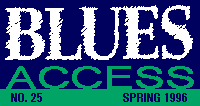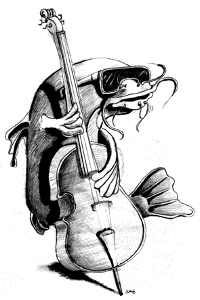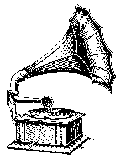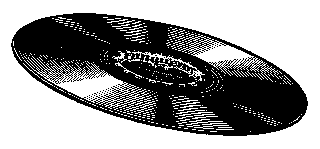


 | ||
 |

Having just purchased a new compact disc player which includes a multi-CD changer (I know, welcome to the '80s), I loaded it up with The R&B Box (Rhino), a six-disc collection of 30 years of soul music, hit the random access on my remote, sat back and got to thinking about storage capacity.
The device used to store music for playback has always determined how musicians shape the act of recording. Back in the early days of The R&B Box, and it opens in 1943 with Louis Jordan & His Tympany Five's "Five Guys Named Moe," Jordan and the boys were limited to a 78 rpm piece of shellac or a 45 vinyl single.
 For either, the composition couldn't go much beyond three
taut, tight minutes of perfection, with a hook wide enough to
keep listeners playing it over and over until the next one came
out, generally a few months later. Whether Illinois Jacquet with
"Flying Home," Percy Sledge with "When a Man Loves
a Woman" or Ben E. King's "Spanish Harlem,"
a musician was no better (or worse) than his latest single, and
when it came to recording, that's all you worried about.
The song was the thing.
For either, the composition couldn't go much beyond three
taut, tight minutes of perfection, with a hook wide enough to
keep listeners playing it over and over until the next one came
out, generally a few months later. Whether Illinois Jacquet with
"Flying Home," Percy Sledge with "When a Man Loves
a Woman" or Ben E. King's "Spanish Harlem,"
a musician was no better (or worse) than his latest single, and
when it came to recording, that's all you worried about.
The song was the thing.
The ones who survived learned how to use every available second of those 180 seconds or so, and they downloaded into every groove the tight R&B (or blues, or soul) symphonies that are now pouring out of my speakers.
The most dramatic change in recording dynamics began in 1947 with the introduction of the 33 1/3 rpm vinyl record. Here was a storage device that ideally held about 18 minutes of music per side, more than six times as long as before.
Vive la difference. The long player provided amazing new freedom, opportunities and challenges. You could put lots of singles on the same record. Three-minute sides could now run up to 20, or even fade out and start up again on side two, if that's what you wanted. Songs could be positioned strategically, creating an "album" of like-minded material. Sides could be different from one another; one acoustic, one electric; one soft, one hard, etc. The possibilities seemed endless. (It took awhile for musicians and the industry to catch on to the new technology. Not surprisingly, it was classical music that benefited initially; the expanded format was more immediately suited to its compositional limits.)

With the advent of the compact disc, storage capacity -- and the price and profits -- increased exponentially once again. A compact disc can hold almost an hour and 20 minutes of music, enough for two albums or 25 (count 'em) singles.
That's not necessarily for the best. Granted, a few musicians (very few) can actually measure up to such a ridiculous challenge. Should we really expect working musicians to be able to come up with 45 minutes to an hour's worth or more of material for every album -- and tour 200 nights a year -- and expect it all to be good?
The process of creating albums has changed. When it comes to song selection, there's certainly less pruning than before. Songs once relegated to single B-sides as perks for fans, oddities that might wind up on greatest hits collections, cover versions of classics (way too many of these), rave-ups from the live show, even half-baked ideas turned into songs are now routinely part of the recorded package.
It all tends to diminish rather than distinguish the entire product.
Of an unscientific, informal survey I took of 20 recent blues releases, the average playing time was 49 minutes (high of 55 minutes, with none coming in less than 42). The average number of songs came out to 11.5, which averages more than four minutes per track.
So the three-minute masterpiece has gained more than a minute, and CDs run an extra 10-15 minutes over LPs. But I don't hear any of the same care going into those extra 60-plus seconds that I hear on the singles on The R&B Box; they just drone on longer to fill up the space by letting the solo go another sixteen bars or fade out longer. And the extra songs aren't necessarily any better.
Wouldn't you really rather listen to five or six really well-crafted tracks than slog through the filler that tries to justify the price?
Don't get me wrong. Compact discs are great. Their ease, their portability, their durability are unbeatable. And I'm not preaching Luddism here; music should be pushed by the technology. We don't need to go back to the 45.
But musicians shouldn't feel pushed to fill CDs with average work, either.
-- Leland Rucker
 |
 |